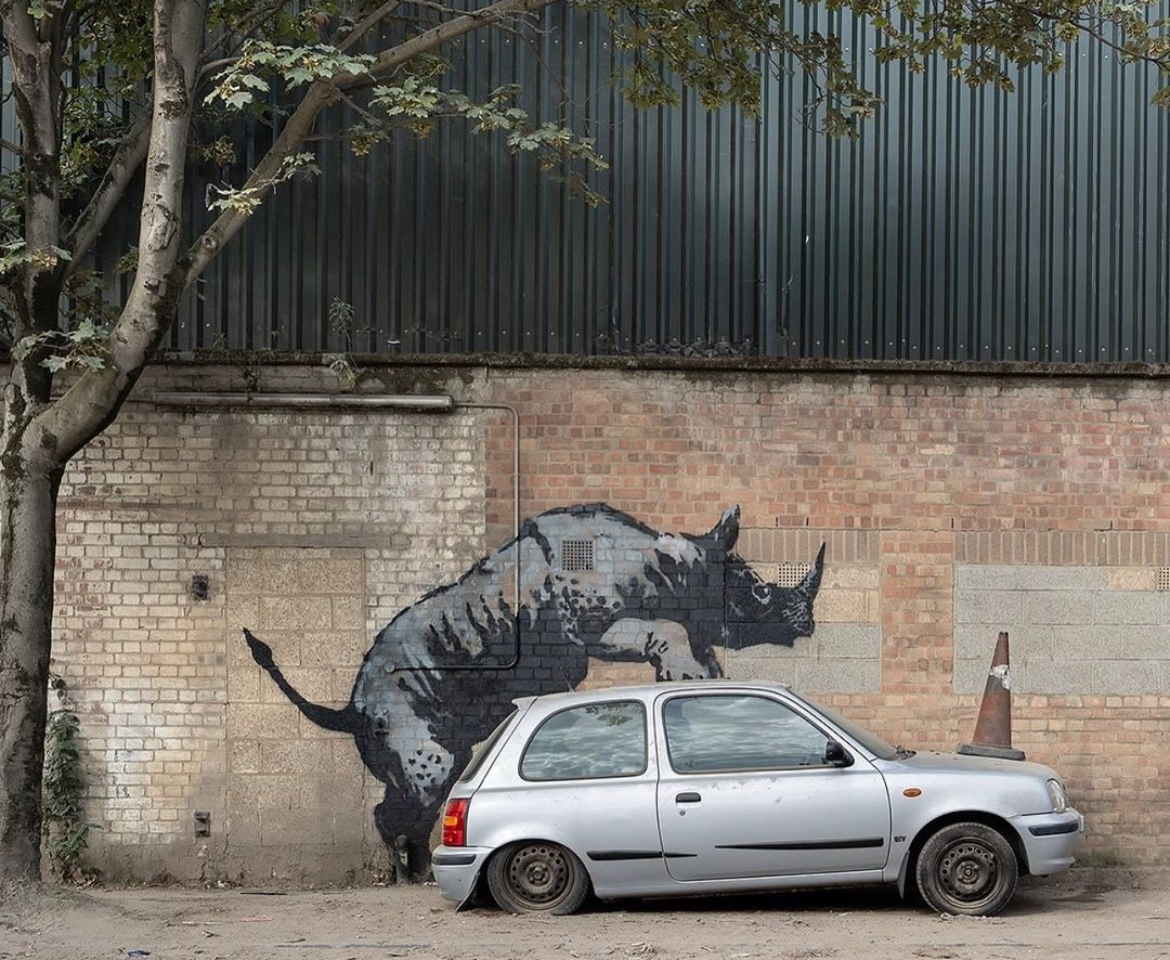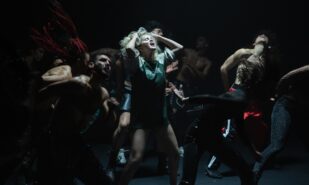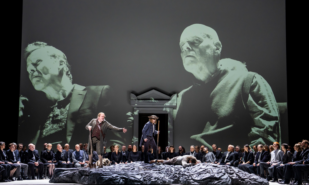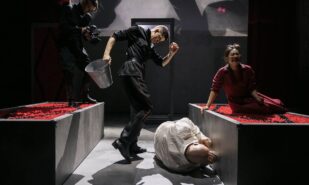For nine consecutive nights, the streets of London, each time in a new location, were graced with animal-themed graffiti by Banksy, the mega-star of modern art. For an artist known for his sporadic appearances, this serial manifestationbecame the first major street-performance since his month-long New York takeover in 2013, whenhe “occupied” the city in his distinctive style.
Attention: Artist at Large! Reflections on Banksy’s 9-Day London Intervention
The nocturnal animal parade commenced with a black goat precariously poised atop a narrow buttress in Kew. In a wry nod, Banksy aimed a CCTV camera at stenciled stones crumbling beneath the goat’s hoof. On the second night, two adjacent window frames of a house in Chelsea were populated by a pair of elephants, their trunks an arch. The third night saw a troop of monkeys crossing a bridge over Brick Lane. Peckham briefly played host to the fourth instalment: during the day, enterprising locals spirited away a satellite dish with the wolf depicted on it. Walthamstow’s fish shop sign was reimagined on the fifth night, with two pelicans feasting on its offerings. On Saturday, black cat briefly adorned an old billboard in Cricklewood before workers, led by a man named Mark, dismantled the structure, which ‘they had long planned to replace.’
On the seventh day, Banksy defied rest,transforming a City police booth into a piranha-infested aquarium—a piece decried as vandalism, however carefully relocated to be ‘soon put on public display elsewhere.’ As the new week dawned, a rhino was seen mounting a Nissan Micrain Charlton, with Banksy’s emblematic traffic cone perched on its bonnet. Finally, at the entrance to the London Zoo, the artist depicted a gorilla organizing the escape of a sea lionand some birds. No tenth piece materialized, no parting statement offered: Banksy’s official Instagram account, which serves as a verifier of the authenticity of his works, fell silent as suddenly as it had sprung to life nine days prior.
During this period, London transformed into an urban safari, with tourists and locals alike venturing into its sometimes less glamorous corners in pursuit of “fresh Banksy.” The media offered myriad interpretations of the artist’s latest action, speculating on the symbolism of the goat as a metaphor for geopolitics or human folly, mapping the graffiti locations to discern a hidden pattern.
While tempting, should such intellectual fervor be imposed upon Banksy? Throughout his career, he has been a straightforward, socially-oriented artist (or collective), communicating in a language far more universal. Banksy’s “conceptualism” rarely ventures beyond a banal yet highly effective technique of juxtaposing contrasting elements: destructive vs. positive (a soldier sketching a peace sign), social vs. private (a girl with a balloon), ironical vs. pessimistic (a maid sweeping under a shutter, among many others in Banksy’s oeuvre). The nine-day intervention, when viewed holistically, presents a narrative arc culminating in itsfinal fragment. Why does the gorilla help the zoo animals escape, who then disperse throughout the city? Those pondering this question shouldrevisit the “Madagascar” cartoon for insight into why animals yearn to leave cages and enclosures, and what comes of it.
Perhaps the most intriguing aspect of Banksy’s action lies not in the works themselves, but inthe recurring spectacle where the white-maskedfigure emerges on the streets under the cover of darkness, complete with spray cans and a compact cherry picker. In portraying characters from his paradoxical urban comic, Banksy seems to embody one of its protagonists—a “barely legal,” marginalized voice from the masses. To fully match the image, he requires an antagonist, a bearer of opposing values. Surprisingly, such an “ideological opponent” once existed in King Robbo (John Robertson), a pioneer of London’s graffiti scene. In 2009, Banksy’s alteration of one of King Robbo’s works sparked outrage, leading King Robbo and his comrades to deface Banksy’s art at every opportunity, albeit with little wit or creativity: with banal paint-overs or their own tags. Though King Robbo has long since passed, his disciples still hold a grudge against Banksy. Hence the $V tag on the Charlton rhino serves as the signature of the South Vandals group, the “true graffiti formalists.”
Banksy’s art, standing on its own, independent of its author, is another parallel to the world of comics. We may never uncover Banksy’s real identity or glimpse their face—perhaps they lack one altogether. It’s also possible that in 10 or even 100 years, monochromatic stencils will continue to appear on London’s streets by night, provoking attempts at appropriation or destruction, leaving media persist in theirspeculation: “What did Banksy mean this time?”





